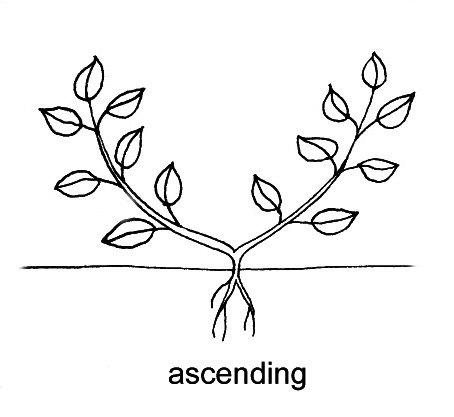|
|
 |
Key to TetradymiaView taxon page for Tetradymia
(For a list of species in Tetradymia, use the above link.) Jepson Manual glossary definitions can be seen by moving your cursor over words underlined with dots. 1. Stem unarmed (leaves not forming spines) 2. Flowers (5)6–9 per head  1. A dense, often spheric inflorescence of sessile or subsessile flowers. 2. In Asteraceae and some other groups, a head-like inflorescence is one in which sessile or subsessile inflorescence units (e.g., heads in Asteraceae, umbels enclosed by involucres in Eriogonum), instead of individual flowers, are attached in a short dense cluster without an evident axis or branches. ; pappus 0 (but fruit covered with long, pappus-like hairs); axillary  Pertaining to or within an axil, especially a leaf axil. leaf  Organ arising from a stem, generally composed of a stalk (petiole) and a flat, expanded, green, photosynthetic area (blade); distinguished from a leaflet by the presence in its axil of a bud, branch, thorn, or flower; sometimes with lateral, basal appendages (stipules); either simple (toothed, lobed, or dissected but not divided into leaflets) or compound (divided into leaflets). clusters generally 0 ..... T. comosa (2) 2' Flowers 4(5) per head; pappus present; axillary leaf clusters generally present 3. Main leaves tomentose  Covered with densely interwoven, generally matted hairs. or silvery; clustered leaves ± (ob)lanceolate ..... T. canescens 3' Main leaves glabrous or sparsely tomentose; clustered leaves thread-like to linear-oblanceolate 4. Main leaves narrowly awl-shaped, stiffly ascending  Curving or angling upward from base, or about 30-60 degrees less than vertical or away from axis of attachment. or appressed  Parallel or nearly parallel to and often in contact with surface of origin; used to describe the disposition of hairs, leaves, pedicels, etc. , generally 5–10 mm; clustered leaves generally 3–10 mm, glabrous; fruit generally 3–4 mm, short-stiff-hairy; pappus of ± 100 bristles ..... T. glabrata 4' Main leaves ± thread-like, soft, 10–40 mm; clustered leaves generally 10–20 mm, loosely tomentose; fruit 5–6 mm, long-soft-hairy; pappus of ± 20 stiff bristles or slender scales (± hidden by fruit hairs) ..... T. tetrameres 1' Stem armed with spines derived from main leaves 5' Fruit ± long-soft-hairy, 4–8 mm 6. Main leaves narrowly (ob)lanceolate, finally deciduous, base not hardened; pappus 0 ..... T. comosa (2) 6' Main leaves tapered  Gradually (not abruptly) narrower or smaller at base or tip. to tip, persistent as stout spines, base expanded, hardened; pappus present 7. Clustered leaves tomentose or silvery-hairy; fruit ± short-hairy; pappus of many fine bristles 9–12 mm ..... T. stenolepis 7' Clustered leaves ± glabrous; fruit densely long-hairy; pappus of ± 25 slender scales 6–9 mm 8. Spines sharply recurved  Gradually curved downward or backward. , 5–25 mm, tomentose; involucre  Group of bracts more or less held together as a unit, subtending a flower, fruit (acorn cup), or inflorescence. generally 8–12 mm, ± bell-shaped; fruit generally 6–8 mm ..... T. spinosa 8' Spines straight, (1)2–5 cm, becoming glabrous; involucre generally 7–9 mm, obconic; fruit generally 4–5 mm ..... T. axillaris 9. Involucre and peduncle  Stalk of an individual flower borne singly, not in an inflorescence, or of an entire inflorescence, or the corresponding structure in fruit; the stalk subtending an involucre (e.g., in Asteraceae, Polygonaceae). glabrous; fruit hairs generally 6–8 mm ..... var. axillaris
Please use this Google Form for Contact/Feedback
Citation for the whole project: Jepson Flora Project (eds.) . Jepson eFlora, https://ucjeps.berkeley.edu/eflora/ [accessed on ]
Citation for an individual treatment: [Author of taxon treatment] [year]. [Taxon name] in Jepson Flora Project (eds.) Jepson eFlora, [URL for treatment]. Accessed on .
We encourage links to these pages, but the content may not be downloaded for reposting, repackaging, redistributing, or sale in any form, without written permission from The Jepson Herbarium.
|
|
 |

